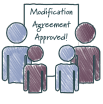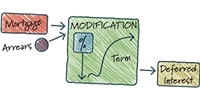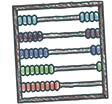Menu

CALL FOR A FREE CONSULTATION
Exceptional Legal Representation Throughout
Long Island and New York, Since 1993.

CALL FOR A FREE CONSULTATION
Exceptional Legal Representation Throughout
Long Island and New York, Since 1993.









Brooklyn Mortgage Modification Attorneys Dedicated to Saving Homes
Our legal team specializes in securing mortgage loan modifications and other distressed property solutions, even for cases that have been previously denied. Let us help you protect your home and find a sustainable financial solution.
 The most effective approach our firm uses to prevent foreclosure for homeowners in severe mortgage arrears is mortgage modification. Most homeowners facing foreclosure seek retention options—solutions that allow them to resolve their mortgage issues while keeping their homes.
The most effective approach our firm uses to prevent foreclosure for homeowners in severe mortgage arrears is mortgage modification. Most homeowners facing foreclosure seek retention options—solutions that allow them to resolve their mortgage issues while keeping their homes.
With a mortgage modification, past-due mortgage payments are incorporated into the remaining principal balance, reducing the immediate risk of foreclosure. The goal is to create affordable monthly payments, even if the total loan amount increases. This is achieved through various means, including:
A successful mortgage modification should accomplish two key objectives:
Our team is committed to helping homeowners achieve practical and effective mortgage solutions to protect their homes from foreclosure.
 Currently, mortgage loan modification is the most popular and effective solution for homeowners seeking to resolve mortgage arrears, halt foreclosure proceedings, and save their homes. However, if a mortgage modification is not feasible or not preferred by the borrower, there are other retention options available for properties in default.
Currently, mortgage loan modification is the most popular and effective solution for homeowners seeking to resolve mortgage arrears, halt foreclosure proceedings, and save their homes. However, if a mortgage modification is not feasible or not preferred by the borrower, there are other retention options available for properties in default.
If no retention options are suitable, we also provide guidance on non-retention options, which are alternatives for homeowners who choose not to keep their distressed properties. These are discussed in detail in our “Debt Negotiations and Settlements” section.
With our law firm’s extensive experience in handling mortgage loan modifications, our skilled team can significantly improve your chances of securing approval. If a modification is not viable, we will thoroughly assess and explore other retention strategies to find the best possible solution for your situation.

Homeowners facing foreclosure often explore retention options to keep their property. Only after evaluating these options and determining that the homeowner is unable or unwilling to save their home do we consider non-retention alternatives, which are discussed in our “Debt Negotiation and Settlements” section.
The primary retention options include:
Mortgage Loan Modification – Incorporates arrears into the loan principal and restructures loan terms to create an affordable monthly payment. Modifications may include lower interest rates, extended loan terms, or deferred/forgiven arrears. Homeowners can apply through direct lender negotiations, foreclosure settlement conferences, bankruptcy court loss mitigation, or an unsolicited lender offer.
Bankruptcy Reorganizations (Chapter 13 or Chapter 11 Plans) – Allows restructuring of mortgage arrears under court-approved repayment plans. Chapter 13 suits typical homeowners (5-year plan), while Chapter 11 is for larger debts (longer terms). Bankruptcy offers benefits such as an automatic stay on foreclosure and creditor actions and supervised debt restructuring.
Friendly Sales & Short Sales – A voluntary sale to a friendly buyer, sometimes with the option to rent or repurchase later. In a short sale, the lender must approve selling the property for less than the mortgage balance.
Payoff / Short Payoff – The borrower clears the entire mortgage debt, including arrears. A short payoff occurs when the lender accepts less than the full balance to settle the debt.
Reinstatement / Short Reinstatement – The borrower pays only the default amount to bring the mortgage current. A short reinstatement is when only a portion of the arrears is paid.
Refinance – The borrower secures a new mortgage loan to replace the current one and resolve arrears.
Forbearance – The lender agrees to delay foreclosure, allowing the borrower time to catch up on arrears while resuming regular payments.
Each case is unique, and our legal team helps homeowners evaluate and pursue the most suitable option to retain their property.

While negotiating mortgage modifications can be complex and time-consuming, they remain one of the most effective ways for homeowners to make their mortgage payments more affordable.
In today’s economic climate, many homeowners face financial hardships due to mortgage arrears, making modification agreements a crucial solution. However, to qualify, a borrower must demonstrate both financial hardship and stability to ensure they can maintain payments under the new terms.
Several key factors influence a homeowner’s eligibility for mortgage modification, including:
By carefully evaluating these factors, our experienced legal team guides clients through the modification process, increasing the likelihood of approval and long-term mortgage affordability.

Since the 2008–2014 recession, triggered by overly aggressive mortgage lending and borrowing, mortgage modifications have become increasingly sought after and accessible. Many foreclosures and unresolved mortgage problems are lingering effects of the previous recession, which we are still facing today. Despite significant improvements in the economy since then, the Covid-19 lockdowns, furloughs, and layoffs caused a major setback. As a result, many homeowners have fallen behind on their mortgages, with many either already facing foreclosure or at risk of it. Although this crisis has left homeowners in financial distress, it has also put pressure on mortgage lenders, as well as federal and state governments, to find better solutions. Seeking a mortgage modification or another negotiated resolution with one’s lender plays a key role in addressing this issue.

In February 2009, the federal government introduced a voluntary initiative to encourage mortgage lenders to modify mortgages for “at-risk homeowners” through laws passed during that time. Homeowners could apply to their mortgage lender to modify the terms of their loan under the Home Affordable Modification Program (HAMP). However, mortgage lenders were not required to reduce the loan principal; instead, they might reduce the monthly payment by extending the loan term and lowering the interest rate.
A part of the initial legislative proposals, which was rejected by the Senate, would have granted bankruptcy judges the authority to mandate mortgage modifications if a lender rejected legitimate requests. Currently, mortgage lenders have the right to reject or ignore loan modification requests, as these modifications are entirely voluntary.
To qualify under HAMP, homeowners needed to be considered “at risk” due to significant hardship, such as a loss of income, increased expenses, or “payment shock” (resulting from significantly higher mortgage payments). By June 2012, the basic requirements of HAMP were revised for many loans, allowing second mortgages and equity loans without disqualifying borrowers. Homeowners also had to be in default or at risk of default.
Borrowers needed to meet the eligibility requirements regardless of whether they were behind on payments, as long as they had sufficient income to meet the adjusted payments. Lenders could reduce interest rates to as low as 2%, and if necessary, extend the loan term up to 40 years to reduce mortgage payments that exceeded 31% of gross income. In return for offering these loan modifications, the federal government provided financial incentives to mortgage servicers.

Although the HAMP program ended on December 31, 2016, it inspired lenders to offer their own, more flexible “in-house” modification programs. Under both HAMP and these “in-house” programs, mortgage arrears and the remaining principal balance would be combined, the interest rate lowered, and the loan term extended, resulting in a larger loan with lower monthly payments. After the conclusion of HAMP, the focus shifted to non-HAMP private bank modifications, which are now available from nearly all major lending institutions. Borrowers no longer need to undergo an initial screening for HAMP modifications; an in-house modification is only considered if the borrower is ineligible for HAMP.
The HAMP program began with modest loan rates of 2-3% but gradually raised them. Despite the benefits of financial subsidies and government monitoring, it became bogged down by additional rules, paperwork, and administrative layers. In many respects, current non-HAMP, private “in-house” modifications are faster and simpler, but they lack the federal government oversight that HAMP provided. However, as the HAMP program ended in 2016, the number of Chapter 13 and 11 bankruptcy cases increased, with “loss mitigation” plans becoming a key component of reorganizations. These bankruptcy cases, focused on “loss mitigation,” provided judicial oversight for the modification process.
The economic impact of the Covid-19 pandemic is expected to cause many more homeowners to fall behind on their mortgages. To address a potential new foreclosure crisis, new government and private initiatives may be needed, offering innovative solutions.

Many homeowners in Brooklyn and Queens who are struggling to make mortgage payments turn to mortgage modification lawyers like the Law Office of Ronald D. Weiss, P.C. for help. The process of seeking a mortgage modification or other retention option can be complex and challenging, making professional representation crucial. While negotiating mortgage modifications and retention options is often beneficial, it can be difficult and unpredictable, as many mortgage holders and their attorneys are resistant to negotiated offers. This requires a strategic and ongoing effort.
Our firm uses a comprehensive approach to mortgage and foreclosure solutions, ensuring we consider multiple options for resolving mortgage issues. While we prioritize mortgage modifications, we do not rely solely on them. Securing better mortgage terms and resolving mortgage issues is a key goal, even though it can be time-consuming and complicated. Here’s why you should consider having our office represent you:
If you’re facing difficulties with your mortgage, the Law Office of Ronald D. Weiss, P.C. can help you pursue a mortgage modification and/or other retention options. For more detailed information on Mortgage Modifications, click here.
To ensure the success of modifications or retention options, it is essential to hire a qualified professional to advocate on your behalf, using applications, letters, calls, and supporting documents to persuade the lender to modify your mortgage.

The Law Firm of Ronald D. Weiss, P.C. has successfully facilitated thousands of agreements, helping clients resolve their mortgage arrears. Thanks to our efforts, many homeowners have avoided foreclosure and been able to keep their homes through various agreements, including mortgage modifications, forbearance agreements, payment plans, short sales, deed in lieu agreements, and other settlements. By allowing us to represent you, we ensure that the foreclosure process is handled efficiently, with timely resolutions. Additionally, we make sure that the settlement terms are documented in a legally enforceable written agreement to protect your rights.
Our consultations are free, and the advice we provide could prove invaluable.
To discuss these negotiation and adjustment options in more detail, please contact us at (631) 250-4120 or email weiss@ny-bankruptcy.com for a complimentary consultation.
MONDAY – FRIDAY -8.30 AM – 8.30 PM